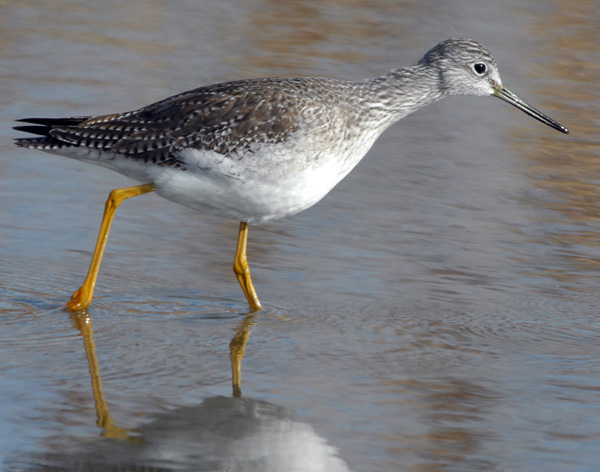Utah County Birders Newsletter
|
 |
Contents
November Meeting
Upcoming Field Trips
Captain's Log
Bird of the Month
Field Trip Report
Thursday, November 9th, 2017: Bean Museum, 7:00PM
Bryan Shirley will lead our weekly meeting and give
a presentation on winter loon and vagrant duck ID.
Address for the Monte L. Bean Museum is 645 East 1430 North, Provo, UT http://mlbean.byu.edu/
FIELD TRIPS:
We're always looking for people to lead
trips, so if we're not leading them frequently enough, feel free to volunteer to
lead one! You don't have to be an expert, you just have to show up! :)
Saturday, Nov. 18th, 2017: Loon Loop time!
We will meet at 7:30am at the parking lot at the mouth of Provo Canyon. We
will follow reports of vagrant loons/ducks to wherever they may be. Dress warmly
as it's bound to be cold up the canyon, and bring a lunch/snacks. Likely stops
include Deer Creek, East Canyon Reservoir, Rockport, Echo, etc... led by Keeli
Marvel. Weather dependent.
We are actively recruiting people to lead local half-day field
trips, any time, any place. If you would like to lead a field trip or if you
have any ideas for this year’s field trips, please contact Keeli at -
keeli.marvel@gmail.com
Utah County Birders
Captain’s Log: November
2017
by Keeli Marvel
Howdy ya’ll! Not much exciting to report for the last month. I haven’t been out
birding near enough. Some of you probably saw my recent post on our UCB Facebook
page about finding a Pacific Wren at work last week. That was a weird find, for
sure, and while it wasn’t a new bird for me, it was a lifer for my coworker,
Sam. Not a bad way to end a day, for sure! Coming up next month I should have a
really good story to tell as Sam and I are getting ready to head down to South
Texas next week for the Rio Grande Valley Birding Festival. We’re both looking
forward to it with great anticipation.
There’s been some interesting movement of Steller’s Jays, Red-breasted
Nuthatches, and Evening Grosbeaks down around the valleys and in yards over the
last few weeks. I hope you’ve enjoyed seeing them, and I wonder if this
forebodes more interesting irruptions in our near future. Time will tell, I
suppose!
Someone asked me on one of the most recent field trips what happens to birds
during hurricanes. I didn’t know the answer to that, but I did a little research
and came up with the following answers. Hurricane season coincides with
migration, but often the two are moving in opposite directions. It seems many
birds migrate with optimal weather and can avoid hurricanes entirely. Some
birds, it seems, can also sense the oncoming storm through the changes in
barometric pressure, and will adjust their schedule to leave early ahead of the
storm. Those that don’t have been observed to ride along with the storms –
sometimes even by following the eyes of hurricanes. They also get sidetracked or
blown off course, or hunker down and ride out the storms at various points along
their migration routes. Larger birds can be surprisingly resilient when it comes
to flying through or around hurricanes.
The biggest problem of hurricanes it seems is loss of habitat and the impact on
food resources and the cascading effects those can have on migration and future
breeding seasons. The large hurricanes that recently decimated many of the
islands in the Atlantic Ocean and caused an ongoing humanitarian crisis also
wiped out critical habitat for several species. In addition to the efforts to
rebuild and restore services on some of the islands, there are also a brave few
who are out looking for signs that some of the more sensitive or endemic bird
populations were able to ride out the storms. There are signs that some have
persisted, despite the devastation, but there’s also less hopeful signs that
some populations did not fare so well. For more information, including updates
on the status of some of the more sensitive bird species populations in the
Caribbean, here are a few articles.
https://abcbirds.org/hurricanesandbirds
http://www.audubon.org/news/how-do-hurricanes-affect-birds
https://news.nationalgeographic.com/2017/10/hurricane-irma-harvey-maria-bird-impacts-caribbean/
As a side note, in the next couple of months I’m going to get ready to step down
as president of the UCB and (at least partially) turn over the reins to someone
else. If you’ve enjoyed reading the monthly newsletters, attending the field
trips, and the monthly meetings please consider volunteering to serve on our
board. I would like to see the Utah County Birders club continue to be a place
where those passionate about birding can join likeminded people and enjoy
learning about and seeing birds, but we need the support of our members to make
it happen.
Hope this article finds you all well and as per usual, Happy Birding!
|
|
|
Photo by Paul Higgins |
Greater Yellowlegs
Tringa melanoleuca
By Machelle Johnson
I would love to be able to give you great pointers on telling the difference
between Greater and Lesser Yellowlegs, or between Yellowlegs and other
shorebirds that all look so similar in their non-breeding plumage – but alas,
I’m usually stumped. Something that I have learned over the years from the
awesome birders in our group is that there is more to it than just looking at
the bird. You need to watch it for a bit, note the habitat, and listen as well.
Fortunately the Greater Yellowlegs can put on quite a show.
Greater Yellowlegs are common and widespread in North America. Typically found
in wetlands, lakeshores, and river bottoms – essentially any fairly substantial
wet area that supports fish, amphibians, or aquatic insects.
You know I love to quote Pete Dunne, so here is his description: “There is
little delicacy to this large, gangly, sturdily proportioned shorebird
distinguished by long bright yellow legs and a long, slightly upturned bill.
Resemblance to Lesser Yellowlegs is only plumage-deep. It is larger than LEYE
and slightly smaller and less stocky than Willet.”
Still sounds a bit vague to me, but behavior will surely give it away, Dunne
says: “Less gregarious than Lesser Yellowlegs. Mixes with other shorebirds, but
amid medium-sized shorebirds, often feeds apart, in deeper water, and is
frequently found feeding among herons and egrets. A more active, angry, and
aggressive feeder than LEYE. Walks with longer strides – a Tyrannosaurs Rex of a
shorebird. Usually hunts with the head up, visually searching for prey. It runs
to catch fish and other aquatic life, stabbing and jabbing its bill into the
water. Also bill-sweeps with head down and bill submerged, charging ahead with
bill sweeping side to side. While using this technique, several GRYEs may move
abreast, forming an interception line; though LEYEs may also bill-sweep, they
appear more methodical than aggressive.” He continues: “Noisy and alert, Greater
Yellowlegs becomes vocal when approached, raising its head and neck, leaning
forward, and yapping constantly. They have a distinctive call, a loud, ringing
three- to five- whistle, “TEW, TEW, TEW”, that is repeated ad nauseam until you
leave or the bird flies.”
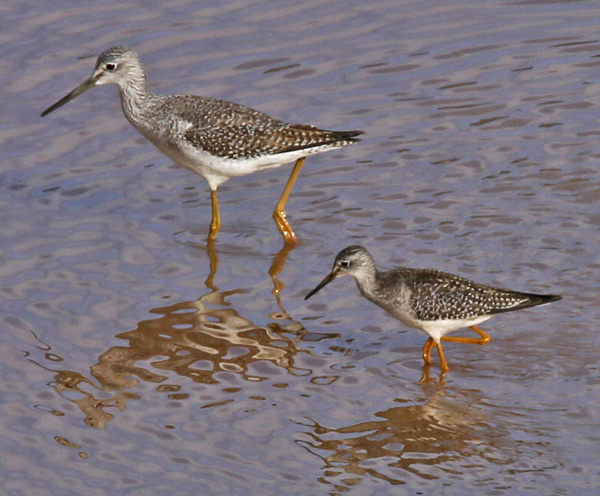
Greater Yellowlegs (left) with Lesser Yellowlegs; Photo by Jim Bruce
So maybe the Greater and Lesser Yellowlegs aren’t that hard to tell apart if you
pay attention to the behavior, or if you get to see them together. It’s always a
fun challenge to breakdown the data you have in front of you and make an ID!
Refrences: Pete Dunne’s Essential Field Guide Companion
If you would like to
write an article for the Bird of the Month, please contact
Machelle -
machelle13johnson@yahoo.com
Click here for past 'Birds of the Month'.
Antelope Island Causeway and Garr Ranch on
Monday, October 9, 2017
By Keeli Marvel
Four people met on Mon Oct 9 to bird the Antelope Is. Causeway and Garr Ranch.
The weather was pretty chilly for our drive out along the causeway, but we
managed to pick out an American Golden Plover amongst the few Black-bellied
Plovers. Other highlights included dozens of Killdeer, a large flock of
Sanderlings, a pair of Long-billed Curlews, and a several dozen American Pipits
along the causeway shoreline.
Garr Ranch was pretty quiet and the majority of birds we saw were either
Ruby-crowned Kinglets, Northern Flickers, or Hermit Thrush, which were all
abundantly present. We also picked up a Lincoln’s Sparrow and a few Cedar
Waxwings as highlights. From there we drove over to the bison corrals and found
a pair of Great Horned Owls roosting in the corral barn. At the visitor center
we saw several Chukars on and around the rocky hillside. We looked for Burrowing
Owls but did not locate any. I’m guessing they’ve probably moved on somewhere
slightly warmer for the winter.
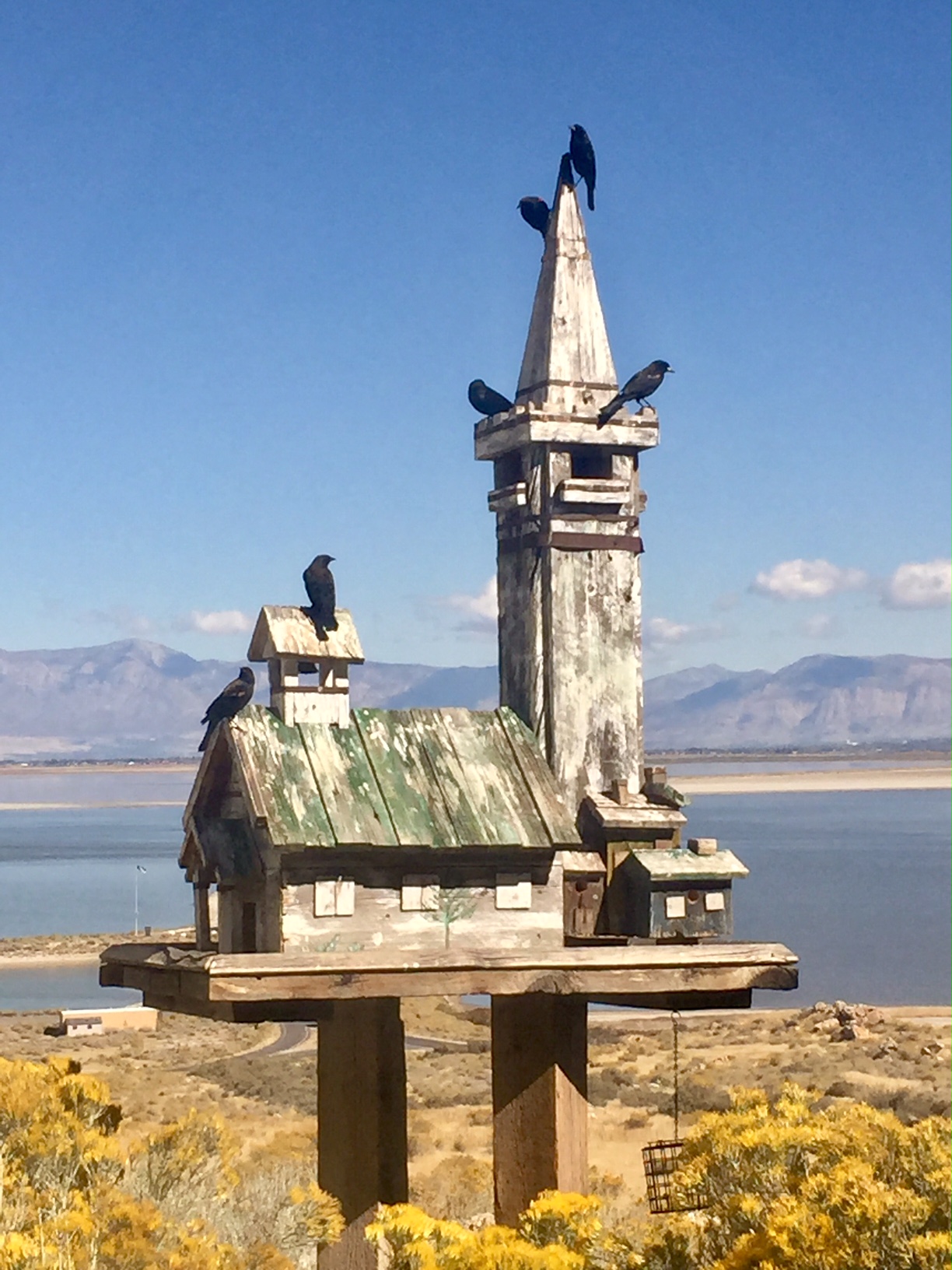
Blackbirds on feeder near Visitor Center
On the drive back out along the causeway we picked up a large raft of Red-necked Phalaropes at the bridge closest to the marina, more Black-bellied Plover, Sanderlings, Least Sandpipers, Western Sandpipers, and another cool find - two Pectoral Sandpipers.
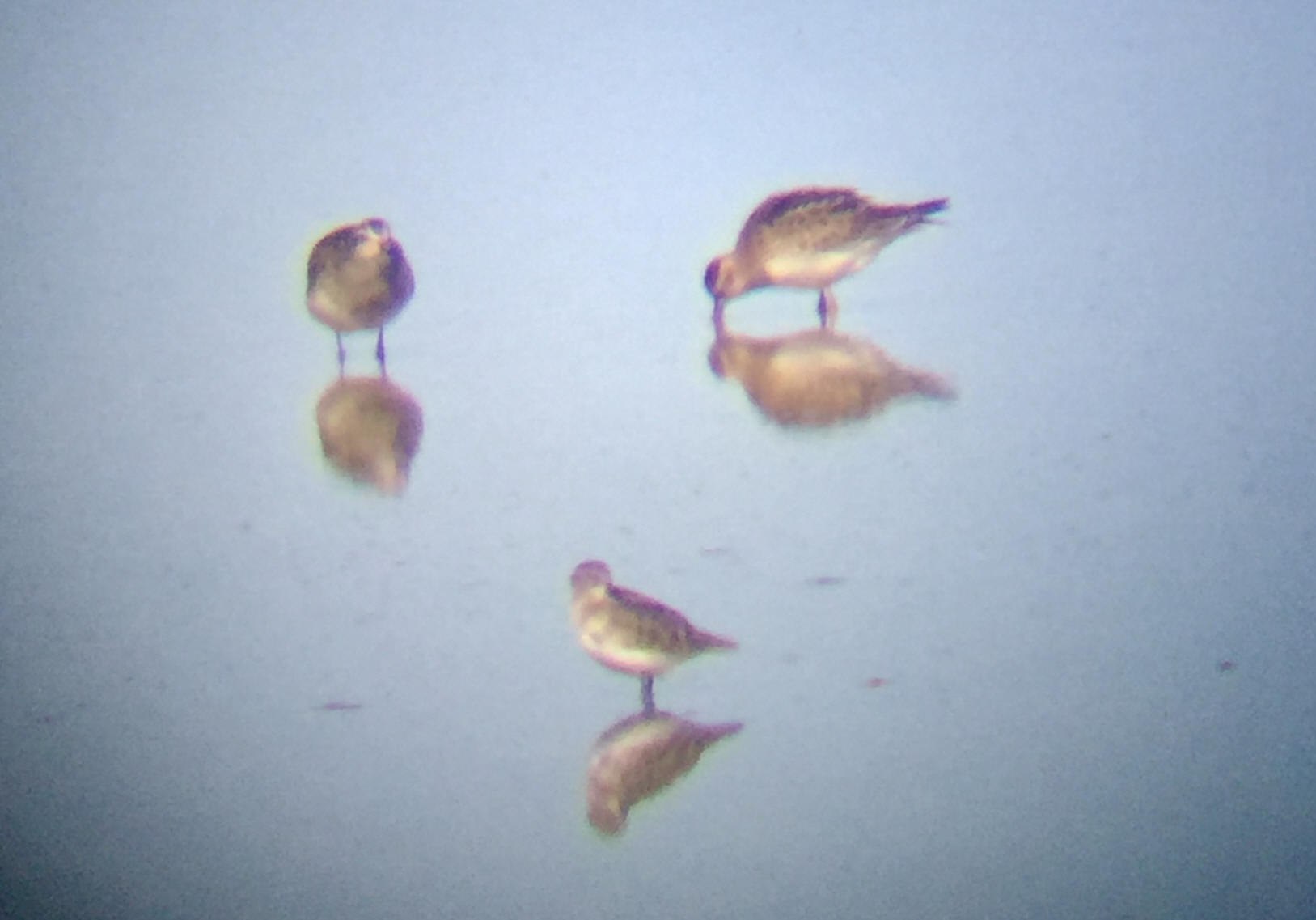
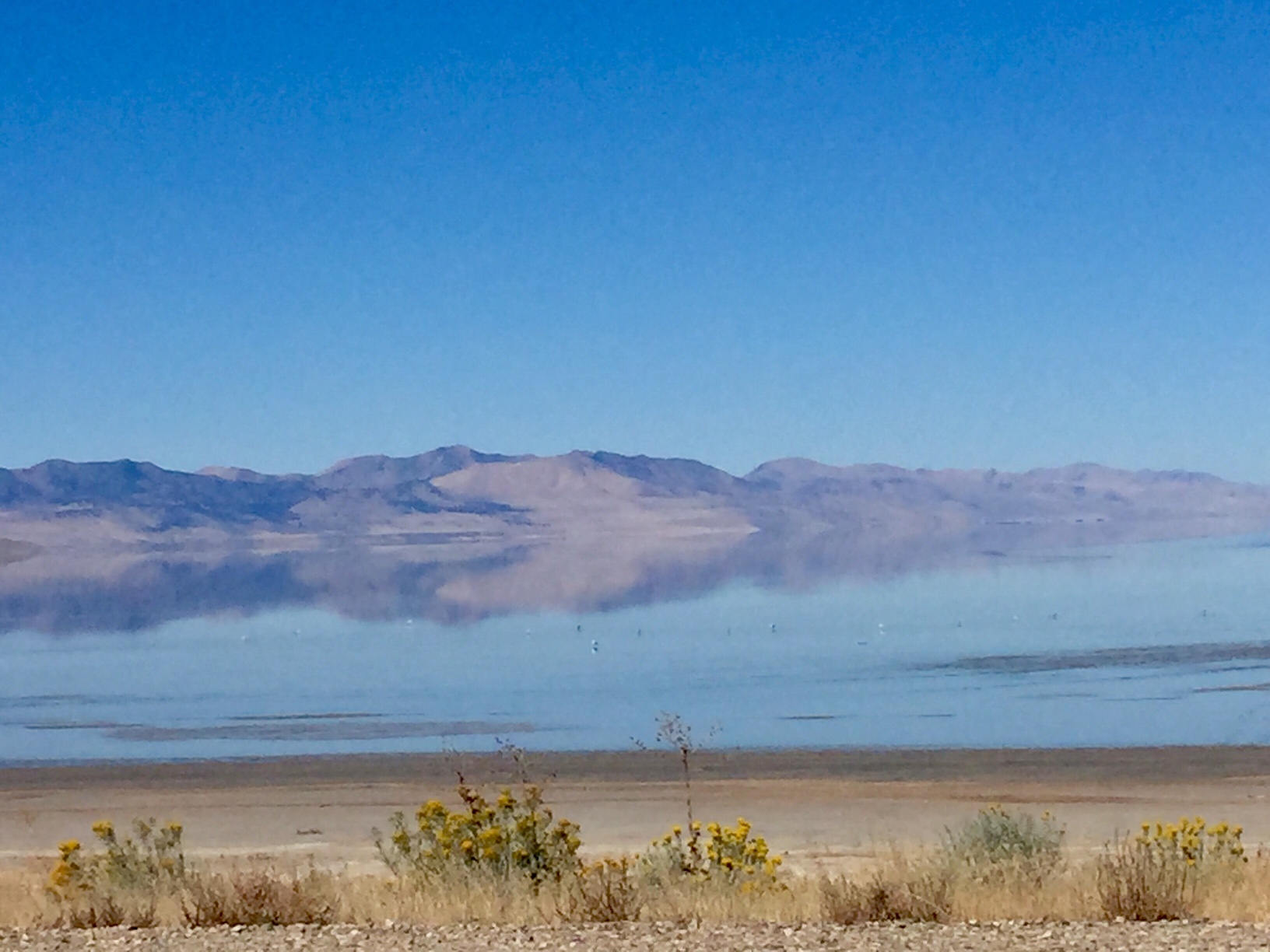
Pectoral Sandpipers
View from the Causeway
Thanks to those who joined me for the field trip. Hope to see ya’ll out birding!
Printable Version of this UCB Newsletter
